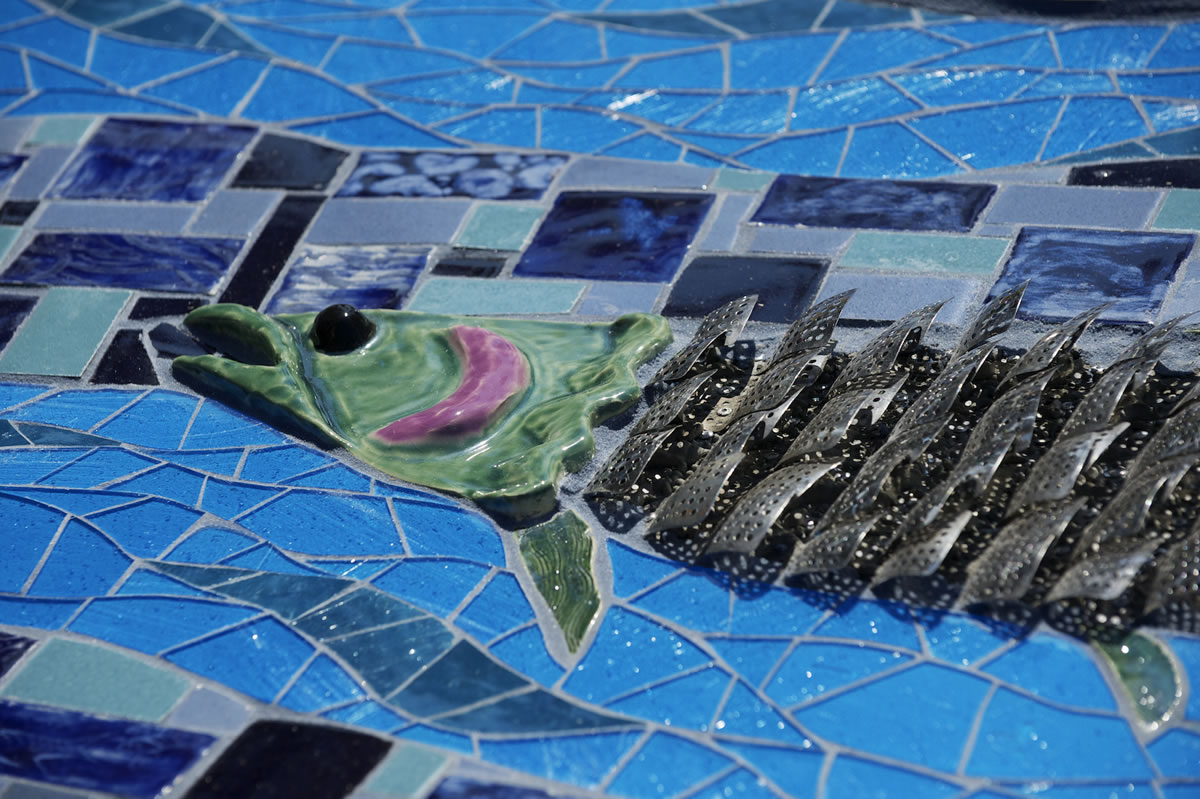“Probably 80 percent is reclaimed material,” Brown said.
When she came on board in April 2010, Brown was given the original student drawings, but they were horizontal and needed to be vertical to fit the space of the school’s bricked-over Palladian windows. She took elements from all the drawings and created a triptych.
The mosaic project was the first all-school core project. Every student made one tile.
Each advocacy class made a tile together for the I-5 Bridge panel. Students were asked to choose words that not only described their advocacy team, but also were a wish for the future. Inscribed on the tiles are the words collaboration, integrity, exultation, equality and acceptance.
During the eight years of working on the project, students, teachers and parent volunteers learned to cut glass, mortar and do tile work.
“It’s a very community-oriented project,” Swatosh said.
Parent volunteers Margo Bina, Julie Genz, Lisa Busch and Janet MacGregor, who have been involved with the project since the beginning, were on hand Thursday to help with last-minute details, including painting one more coat of sealant on the back of the panels and scraping the grout with dental tools.




